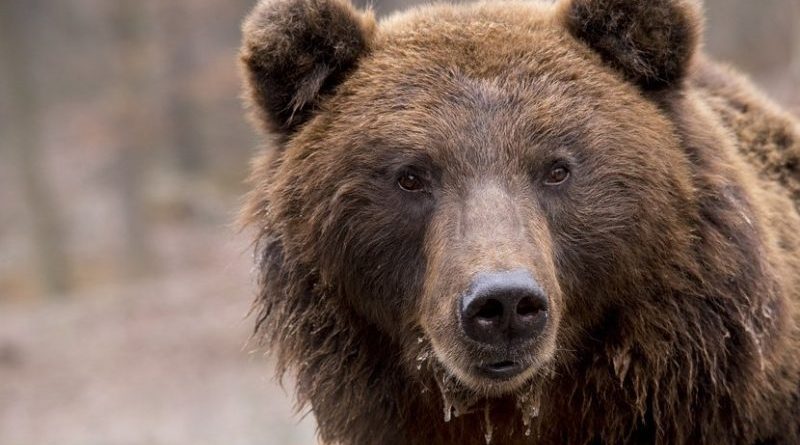Of Bear And Man – OpEd
By Yanis Iqbal
When asked the hypothetical question if they would be alone in the woods with a bear or a man, most women choose the former. The reasoning goes like this: while a bear is a predictable creature whose response can be gauged with a degree of clarity, men are untrustworthy social agents who always try to exercise patriarchal power against women. As one woman said, “I know a bear’s intentions. I don’t know a man’s intentions. No matter how nice they are.”
The response of women to the question speaks a lot about the kind of human subjectivity that has been formed by patriarchy. Men’s self-certainty can be established only through the creation of uncertainty for women. The latter face patriarchy as a vast, implacable behemoth whose laws keep working against them, invariably shoring up the interests of men. Given the social privileges enjoyed by men, their existence functions as an arbitrary power that can do anything in order to extract physical and emotional labor from women. This induces a structural uncertainty in the lives of women – they can never trust men’s intentions, since these are framed by their exploitative social privileges.
An encounter between men and women in a patriarchal society is one in which the masculine machine is always trying to regulate the social field according to its requirements. All the consequences of this encounter are controlled in such a way that the woman continues to remain in a subaltern position. In the aftermath of macho violence, her voice of protest is derived of any moral weight, subordinated to the supreme rationality of male speech. A woman remarks: “You know, I would rather it be a bear because if the bear attacks me, and I make it out of the woods, everybody’s going believe me and have sympathy for me. But if a man attacks me and I make it out, I’m going to spend my whole life trying to get people to believe me and have sympathy for me.”
The patriarchal attempt to shape the play of possibilities into the mold of masculine power institutes a metaphysical concept of reason. Men become supremely rational beings who are in full control of their actions. The entire world revolves around their sovereign will. Women, on the other hand, are excessively “emotional” creatures who don’t possess the capacities necessary to become an autonomous individual. Their bodies always need to be directed by the rational decision-making power of men, functioning as sources of exploitative labor. Thus, men become a beacon of rational clarity and certainty, guiding the whole of humanity on the path of salvation.
From the standpoint of men, their concept of reason represents an unstoppable force marching towards victory. Any obstacle is to be violently removed since masculine reason is inherently correct. This evinces a patriarchal concept of animality as an irrepressible instinct, as a naturalized aggressiveness that lies within their inner constitution. Witness, for instance, the victim-blaming myth in which rape is regarded as a result of men’s unassailable sexual urge, a natural need that needs to be satisfied in any way possible. It is the woman who is blamed for behaving “inappropriately” and thus inviting the inevitable wrath of men. The glorious parade of patriarchal reason morphs into a determined animal that will pursue its goal with single-minded dedication.
By opting for bear, women indicate a different mode of animality. For them, what is clear and certain is not the social authority of patriarchal reason but the dispersed structure of the bear, which may or may not attack the person. There is no natural necessity that drives the bear towards bellicosity; the encounter between the bear and the human being is a contingent one with no pre-determined result. Bear tend to attack humans only when they are provoked or when they are protecting their children. Violence is a specific response arising from the temporary conjunction of local elements, not a murderous urge always present in bears’ nature. This accounts for the predictability of bears’ nonviolent behavior: it is precisely because the being of bears is composed of concrete variables that one can trust the animal not to behave in a necessarily violent way.
Unlike men, bears are open to the environment in which they are situated; they don’t attempt to control their surroundings through a metaphysical fiction. That’s why a woman labels bear as a “predictable wild animal”: predictability arises not from the certitude of patriarchal telos but from the openness of wild living, which makes one’s actions amenable to influence by others. Since the bear’s actions emerge on the basis of the message conveyed by others, we no longer feel overpowered by the animal. On the contrary, we know how a bear will react given our own actions.
The structural relationality of bears’ behavior is aptly captured by Jacques Derrida’s notion of the “animal-machine”: unlike the controlling sovereignty of masculine will, the animal-machine thrives on a de-controlled infinity of traces, merging the interiority of will with the exteriority of others. Rather than regulating the social field of consequences, the animal-machine mechanically interlocks with the play of consequences, unrolling into multitudinous structures without any locus of centralizing authority.
Insofar as the masculine behemoth sustains itself through the exclusion of women, it remains impermeable to women’s actions and thus can’t be known by them. The lack of women’s popular power translates into a lack of knowledge. Men thus become an alien creature whose actions remain unpredictable. Predictability is reduced to the fantasy of pre-destination, a teleological trajectory in which the future is laid along paths carved by men.
The difference between patriarchal animality and feminist animality can be explored through the notion of death. Consider these statements by various women: “the worst thing the bear can do is kill me,” “the bear doesn’t get enjoyment out of it,” “the bear sees me as a human being”. Death at the hands of a bear is a form of perishing that is not stained by misogynist humiliation. The murderous violence of patriarchy incorporates women’s death into a larger narrative wherein their bodies are stamped with the mark of inferiority. Women are treated as deserving of violence, as their corporeality is deemed to be inherently exposed to the threat of deviancy. Being emotional and unstable, women need to be constantly disciplined into the framework of normality. Their death at the hands of men is a spectacle of violence that confers normative legitimacy upon the production of female corpses.
Being killed by a bear, on the other hand, doesn’t presuppose the construction of an overarching normative worldview. Death is not immediately legitimized as a byproduct of a moral mission. It remains a local consequence of a contingent encounter, a specific articulation of relations. These relations underline the shared vulnerability of entities, the way in which the life of a human being is joined to the life of a bear. My life is not an indivisible whole that stands opposed to the threat of death. Death resides within us as an ineradicable vulnerability. This vulnerability emerges from the necessity of forming relations with others. These others constitute a social structure that is irreducible to the intentions and will of the individual. Instead of following the commands of a sovereign authority, the social structure obeys the self-developing logic of the space among individuals, the differences that grow with the interlinking of one entity with another.
The fantasy of masculine invulnerability displaces the basic unruliness of being onto women, who are configured as unstable organisms. However, unruliness resides within each one of us in the form of existential dependence, the influence that the other exercises on my own rhythm of living. The encounter between the bear and the human being undermines the sovereignty of patriarchal reason by showing how the individuality of humans is tied to the response of the animal. How I face the animal will determine my own life. The encounter is not necessarily guaranteed to end in one specific outcome, as happens in the unidirectional march of masculine phalanxes against women. Patriarchal predictability is inscribed in the inner strength of the man. Feminist predictability is inscribed in the unfolding of the encounter, the enveloping actions of the other.
It is this distinctive predictability that justifies a woman’s assertion that “the bear sees me as a human being”. Seeing someone as a human being means appreciating them as a link in a fragile existential chain, a trace that is be to be dotted to other traces in an ecology of relations. Men ideologically destroy this ecology by seeing women as objects to be controlled, as entities whose ability to undertake actions and unfurl consequences is to be curtailed. Their acts of violence against women attempt to cover up the relationality of human beings; the death of women becomes a testimony to male power. Being killed by a bear, in contrast, underlines the finitude of human life, its embeddedness in an environment of relations that can’t be authoritatively controlled.
What the encounter between the bear and the human being forces us to consider is a death that is not immediately integrated into a coherent, determinate narrative. Instead, it asks for a narrative that is aware of its own fragility, its rootedness in fluid, indeterminate relations that could as well possibly have not been. Patriarchal narration eliminates indeterminacy by constructing a dividing line between “rational” men and “emotional” women, with the former providing the anchor for the firmness of the narrative. The other is always a threat to be managed so that the purity of the dividing line can be preserved. But what if the other constituted the interiority of the self? What if the imperative of rational sovereignty hid the weakness of the individual, who is always at the mercy of uncontrollable relations?
Here, one can use Derrida’s notion of “foliated consistency” to speak of a narrative that is based on a conscious recognition of the vulnerability of relations, their ingrainedness in the fabric of interconnected multiplicities. The straight line between men and women undergoes a process of “complicating, thickening, delinearizing, folding, and dividing”. It “no longer forms a single indivisible line but more than one internally divided line…as a result, it can no longer be traced, objectified, or counted as single and indivisible.” The inner line delineating the core of human individuality is shown to be formed through external relations with infinite others. These others deflate the coherence of the self to reveal a new coherence structured through layers, through a multiform landscape. The consistency of the individual conveys not a sense of seamlessness but the contingent interaction among layers.
Leonardo da Vinci’s drawing “Head of a Bear” expresses the topography of indeterminacy in a beautiful manner. The head of the bear seems in a state of vulnerability. But this doesn’t represent brute exposure to a flood of external aggression. Rather, externality is a part of the bear’s field of vision itself, providing signposts whose strangeness invites curiosity. Looking somewhere out there, the bear is in a state of inquiring repose: repose isn’t the immobility of an undifferentiated setting but the mobility of a body that encounters emergent differences. There is no neat line between the bear’s head and what it is looking at: insofar as the drawing doesn’t include what the bear is looking at, optics becomes unbounded, coursing through a mesh of vastness. We don’t know what the bear may see, but the very act of seeing creates a texture of indeterminacy in which an entire world can be built.


